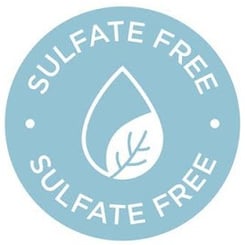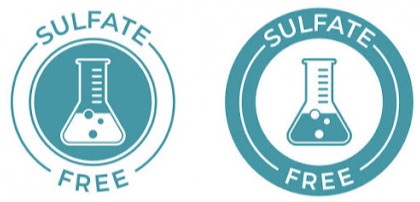 Photo from Unsplash
Photo from UnsplashOriginally Posted On: https://blog.smartersorting.com/consumer-product-claims
In 2016, four cosmetics companies were charged by the Federal Trade Commission for falsely claiming that their products are “all natural” or “100% natural”. In reality, the products contained synthetic, unnatural chemicals. Each company is now barred from making similar false claims in the future, and must provide scientific evidence to substantiate their ingredient-based claims.
Of course, it’s no secret that consumer product claims help suppliers and retailers sell more products.
Just ask the droves of health and eco-conscious shoppers. These consumers are starving for trustworthy products that fit their specific needs, and they need claims to back up every purchasing decision. And when consumers can easily find and verify product claims that meet their needs, retailers and suppliers are rewarded with increased brand loyalty and increased revenue.
One study found that 64% of Americans are willing to pay more for sustainable products, but 74% don’t know how to identify them.
Making claims is important for the bottom line, but it’s crucial for suppliers to avoid making false or misleading claims about their products. Not only can this damage brand reputation among loyal customers, but suppliers and their retailers can suffer from decreased sales and costly regulatory fines.
There are a few claims that have gained a lot of attention recently due to various health and safety concerns. We’ll examine three common claims in personal care products, and explain why consumers and retailers are choosing to source products that can support these claims.
Paraben-free
Parabens are synthetic ingredients that are commonly used as preservatives in a wide variety of products. The most commonly used parabens include methylparaben, ethylparaben, propylparaben, butylparaben, isopropylparaben, and isobutylparaben.
Parabens work by preventing the growth of bacteria, yeast, fungi, and other harmful microbes. They are most commonly found in personal care products like shampoo, as well as cosmetics and skin care products like facial cleansers. Believe it or not, these ingredients have been used as preservatives for decades. The more common types have attained the FDA’s Generally Recognized as Safe (GRAS) classification since as far back as the early 1970s.
However, over the past few years, studies have emerged linking paraben exposure to endocrine and reproductive harm. These compounds mimic the naturally occurring hormone estrogen, leading to disruptions in normal endocrine functions and increased risks of cancer.
As a result, many retailers have placed parabens and their derivatives on their banned substances list. In the European Union, Japan, and 10 southeast asian countries, isopropylparaben and isobutylparaben are outright banned from personal care products.
Phthalate-free
Phthalates are a group of chemicals derived from phthalic acid. Phthalates are most commonly used in plastics and polyvinyl chloride. In consumer products, they serve as plasticizers and solvents in personal care items, household cleaners, cosmetics, and fragrances.
For example, phthalates are used in nail polish formulas to help prevent cracking. In laundry detergent they help create that “clean” scent we all know and love. Phthalates are also found in hairspray, where they give hair a strong but flexible hold.
Those are just a few examples, but the uses for phthalates are extensive, and their presence in everyday consumer products is pervasive. In fact, it’s estimated that up to 95% of Americans have phthalates present in their urine, as reported by Environmental Health News.
Here are a few examples of common forms of phthalates found in ingredients lists:
- DBP (dibutyl phthalate)
- DINP (diisononyl phthalate)
- DEP (diethyl phthalate)
- DEHP (di-2-ethylhexyl phthalate)
Much like parabens, phthalates have recently been discovered to act as endocrine disruptors that cause reproductive harm. Some studies have also identified negative impacts on neurodevelopment and cognitive function. DEHP (di-2-ethylhexyl phthalate), has been found to damage vital organs and is especially prolific in beauty products. According to Health Care Without Harm, a study conducted by public health organizations found that up to 70% of beauty products tested contained hazardous levels of phthalates.
Incremental steps are being made to ban or limit the amount of phthalates in consumer products. The FDA has set limits on the amount in food contact materials like plastic packaging. Additionally, six different types of phthalates are listed under California Prop 65, which heavily restricts chemicals in products that are imported, manufactured, or sold in California.
Sulfate-free

Examples of sulfate-free claims
Sulfates are chemical surfactants that are used as effective detergents and cleaning agents. The most common sulfates of concern in consumer products are sodium lauryl sulfate (SLS), ammonium lauryl sulfate, and sodium lauryl ether sulfate (SLES). These ingredients can be found on the labels of many shampoos, conditioners, laundry detergents, and even toothpastes.
Sulfates allow shampoos and soaps to foam and easily mix with water, which make them effective cleaning agents.
Several studies have been conducted to measure the toxicity of sulfates and identify potential hazards to human and ecological health. These studies by and large were unable to correlate sulfates with any associated health or environmental hazards.
However, sulfates have been found to cause skin irritation to people with existing skin issues and sensitivities. Conditions like psoriasis and eczema are exacerbated through repeated exposure. In a study conducted by the American College of Toxicology, SLS was shown to induce contact dermatitis in test subjects after brief exposure.
These compounds can also be irritating to the eyes and lungs, especially after prolonged contact. Continual use of sulfate containing shampoo has been known to dry out the scalp and hair and cause additional irritation by stripping moisture away.
Despite no clear data on toxicological and ecological hazards, skin irritation and dryness are cause enough for many consumers to seek sulfate-free products. Retailers are taking note of this trend, sourcing “sulfate-free” or “SLS/SLES free” products to make them more readily available and searchable for their customers.
Challenges with the Current SystemThe current system for validating chemical claims is deeply flawed. Third party labs and testing facilities are able to validate chemical claims, but are ultimately expensive and time consuming. Small suppliers can’t always afford to pay for these services. Additionally, suppliers are often required to divulge proprietary formulations and confidential business information to these third parties, which pose inherent security risks to their brand.
The process is no better for retailers. They can examine the full ingredients list for every chemical product and cross reference it against a complex, evolving database of claims and chemical thresholds. However, this process is largely manual, error prone, and requires a deep knowledge of chemistry and current regulations. Plus, how does a retailer make sense of products that are mostly free of a banned ingredient, but may contain trace amounts or byproducts?
Third party software and consulting services may offer a patchwork solution, but it’s difficult for these entities to provide instant, up-to-date validations without an automated and data-driven process.
Even when claims are made, consumers are wary and distrustful of these statements. In fact, the study previously mentioned found that 45% of Americans need a third-party validating source in order to fully trust claims made by a company.
That’s where Smarter Sorting’s Product Intelligence comes in.
Product Intelligence for Trustworthy ClaimsSmarter Sorting offers a data-driven approach for identifying chemicals, or lack thereof, in formulated products and overcoming challenges with the current system.
The Product Intelligence Platform takes basic, non-proprietary product attributes from suppliers, and instantly validates over 80 ingredient-based claims. The process is fully automated and relies on computational chemistry and a real time database of claims and chemical thresholds, ensuring accuracy and traceability every step of the way. For each product registered in the Product Intelligence Platform, validated claims can be easily searched, viewed, and managed.
Retailers can quickly verify claims to ensure compliance with inventory policies, upholding high standards and fostering trust among consumers. As a result, consumers can be certain that their standards for safe and healthy products are being fulfilled.
Most importantly, suppliers gain a streamlined approach for meeting retailer inventory standards, getting their products onto shelves, and providing consumers with the transparency they need. The best part? Full formulations are not required, so suppliers can keep their confidential business information just that – confidential.
Ultimately, retailers, suppliers, and consumers can all rest assured knowing that product claims are accurate, traceable, and trustworthy.